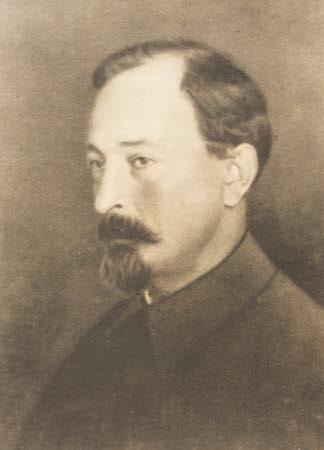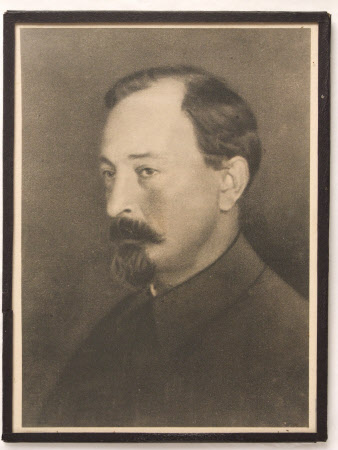Felix Dzerzhinskii
Unknown
Category
Art / Prints
Date
circa 1931
Materials
Paper
Measurements
8 ins (h)6 ins (w)
Order this imageCollection
Shaw's Corner, Hertfordshire
NT 1274647
Summary
Photogravure of Felix Dzerzhinskii (1877 – 1926) made c.1931. Head and shoulders portrait, turned to left, seen with beard and moustache. Wears dark buttoned jacket. Glazed; black passe partout frame. In pencil verso: "FELIX DZERHINSKY (sic) /1877-1926"
Full description
Bernard Shaw admired Commissar Felix Dzerzhinskii (1877-1926), besides the Soviet leaders Vladimir Lenin and Stalin, owing to the work they had done in constructing the new Soviet society. Both Shaw and Charlotte invested financially in the USSR. Images of all three men were displayed on the dining room mantelpiece at Shaw’s Corner by Shaw at some point after 1930 (probably during the 1940s after Charlotte's death). Dzerzhinskii was a Soviet Bolshevik revolutionary and a Soviet statesman, and as a follower of Lenin he participated in the Bolshevik Revolution of October 1917. He was the first chief of the secret police from 1922 until 1926. Shaw mentions him in the preface to his play The Simpleton of the Unexpected Isles (1934). Here Shaw reveals the sinister impact of Dzerzhinskii by comparing him to Henrik Ibsen’s Button Moulder (“Death”) in the play Peer Gynt (1867). Shaw identifies with Peer, seeking ways of challenging and defeating the Button Moulder, and expresses his fear of this ominous figure: "Peer Gynt, returning to the scenes of his early adventures, is troubled with the prospect of meeting a certain button moulder who threatens to make short work of his realized self by melting it down in his crucible with a heap of other button-material. Immediately the old exaltation of the self realizer is changed into an unspeakable dread of the button moulder Death". (Shaw, ‘The Quintessence of Ibsenism’, in Major Critical Essays (London: Constable, 1932 [1891]), 46-47). As Shaw sees Dzerzhinskii as the Button Moulder, the expression here of Peer’s (and thus his own) ‘dread’ of this figure problematizes readings of the dining-room mantelpiece where the portraits of the Soviet leaders are viewed purely through the prism of Shavian veneration. Dzerzhinskii’s portrait is on the mantelpiece in the dining-room, placed next to those of Stalin and Lenin. Adjacent images of Henrik Ibsen and Mahatma Gandhi represent a more humanitarian outlook that was staged by Shaw to deliberately challenge the Soviet presence.
Provenance
The Shaw Collection. The house and contents were bequeathed to the National Trust by George Bernard Shaw in 1950, together with Shaw's photographic archive.
Marks and inscriptions
Verso: In pencil verso: "FELIX DZERHINSKY (sic) /1877-1926"
Makers and roles
Unknown, artist

